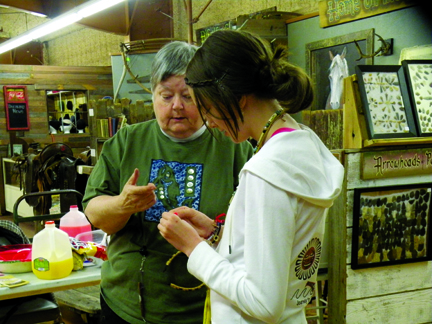Karla Stover
Senior Scene
At the Northern Pacific Railroad’s Sept. 10, 1873 annual board of directors meeting, the members chose Tacoma as their new western terminus. Soon after the company purchased 3,000 acres of land for a town site.
Laying out cities in the 1870s was child’s play. All that was required was a map and a ruler. James Tilton, who had been surveyor general of the territory back in Isaac Stevens’ era, was still around. The land company handed him a ruler and asked him to start drawing.
Stories at the time claimed that Matthew Morton McCarver gave Tilton a plan that had been used for Sacramento and he used it as his model, or that Tacoma was patterned after Melbourne, Australia.
Tilton’s sketches didn’t survive, but in Oct. 3, 1873 an article in the “Weekly Pacific Tribune” said Tilton simply made a few modifications to the basic grid plan then in vogue, a broad rectangle subdivided into squares. He laid out three main avenues 100 feet wide that paralleled the waterfront, and two others slanting diagonally up the face of the hill. The slant was a concession to the difficulties that both horse-drawn streetcars and pedestrians would encounter on a direct climb. These five avenues were too broad to degenerate into alleys but not grand enough to detract from the designated thoroughfares. The blocks on either side of them were 120 feet deep.
Tilton left undeveloped an area about 1,000 feet south of the bay in the middle of town for development as a central park or as the campus of a building complex should Tacoma become county seat or territorial capitol. Two smaller parks stood on the north and south flanks of the town. While Tilton was still making sketches, events and decisions back east aborted his conception. As the sale of railroad bonds slowed after Jay Cooke’s financial empire collapsed, sale of land at the terminus offered the best hope of raising working capital.
The Northern Pacific formed a subsidiary that became the Tacoma Land Company and had the company develop a terminus and sell the town lots. The railroad’s directors then chose C. B. Wright to head the land company. Almost immediately President Wright began to discuss replacing Tilton with the country’s best-known landscape architect, the “brilliant, unorthodox, opinionated, highly controversial, Frederick Law Olmsted.â€Â Olmstead liked “gracefully-curved lines, generous spaces and the absence of sharp corners, the idea being to suggest and imply leisure, contemplativeness and happy tranquility.â€
Whether Wright and the board were concerned with prompting happy tranquility at their terminus is doubtful. Probably what attracted them were Olmsted’s capacity for attracting attention, and his reputation for finding novel solutions to difficult problems of terrain. The members commissioned him to make a preliminary study for the town site.
Rather than visit Tacoma, Olmstead worked from contour maps and sketches. His vision was a town that would blend with sea, forest, and mountain. Sketches show his concept of a latticework of diagonals to climb the hill back from the bay.
The plan was delivered to the Northern Pacific on schedule in early December and reached Tacoma the week before Christmas, where it was put on display in the Tacoma Land Office, a small wooden building built over a skunk cabbage marsh. Residents considered Olmsted’s vision with a considerable lack of enthusiasm.
Thomas Prosch, editor of the “Pacific Tribune”, wrote that he found the plan “unlike that of any other city in the world,†and “so novel in character that those who have seen it hardly know whether or not to admire it, while they are far from prepared to condemn it.â€
The most peculiar features were the varying sizes and shapes of the blocks, and the absence of straight lines and right angles. Every block and every street and avenue were curved. The lots had a uniform frontage of 25 feet, but differed in length, averaging, however, 180 feet. The curvature of the blocks did away with corner lots, and their great length with much of the misery of street crossings, where collisions and accidents most frequently happen, and where problems with mud and dust were the worst.
There three major avenues:Â Pacific, intended for the business of the town, and for country trade and traffic, Tacoma for access to the parks, and Cliff (Stadium Way) for residences. Pacific led up the banks, from the railroad dock, and continued out into the country; Tacoma Avenue was only about a mile long, and it intersected up in town with Pacific Avenue and ran down to the beach between old and new Tacoma; Cliff Avenue extended along the brow of the bluff, two miles or more in length.
Prosch felt that time alone would prove the plan’s viability. However, speculators, who wanted to buy corner lots, saw no merit in a downtown deliberately left deficient in four-way intersections. Olmsted’s dream of a business district without bottlenecks was a nightmare to them. Nor were the engineering crews assigned to run lines amid the downtown stumpage to create Pacific, Cliff, and Tacoma Avenues persuaded by Olmsted’s dictum that “speed of traffic is of less importance than comfort and convenience of movement.â€
In prosperous times the Olmsted plan might have survived, but the Northern Pacific board lacked the confidence to wait out the discontent. After Jay Cooke’s bank failed, the panic began deepening into depression, and the railroad was desperate for capital.
Olmsted was notified that his ideas would not be used and his services were no longer required.

